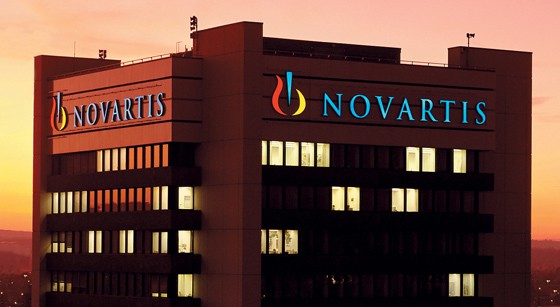
New phase III data has revealed that Novartis’ chronic myelogenous leukaemia (CML) treatment Tasigna is more effective than forerunner Glivec over the long-term.
The results indicated more robust response rates for Tasigna (nilotinib) compared to Glivec (imatinib) – also marketed by Novartis – in patients with Philadelphia chromosome-positive CML, as well as trends towards longer overall survival, over five years.
The finding is a boost to Novartis as it tries to migrate CML patients to Tasigna from Glivec (imatinib) – which starts to lose patent protection from 2015 making it vulnerable to generic competition.
Glivec is still Novartis’ top-selling product, bringing in sales of $3.46bn in the first nine months of the year, although it failed to grow for the first time in the third quarter.
Meanwhile, Tasigna has been steadily climbing up the rankings since its first launch in 2007, with sales rising 33 per cent to $914m over the same period and is one of six products that Hervé Hoppenot, president of Novartis Oncology, has said will drive sales of the company between now and 2018.
The studies were presented at the American Society of Haematology (ASH) meeting in New Orleans this week and covered a broad range of CML patients, including newly-diagnosed subjects, those with residual disease who switched to Tasigna after long-term treatment with Glivec, and Glivec non-responders.
Five-year data from the ENEST-nd study in newly diagnosed Ph+ CML patients demonstrated higher rates of early and deeper sustained molecular response (MR) as well as a reduced risk of progression for Tasigna versus Glivec, said Novartis.
The highest grade of response (MR4.5) – which is associated with a low risk of progressing to the advanced stages of CML – was more than 20 per cent more likely to occur with Tasigna than Glivec by the end of the follow-up period.
Hoppenot said recently that the aim was to show that switching to Tasigna from Glivec could change the goal of treatment in CML from control to cure of the disease, “where patients can be taken off treatment”.
Meanwhile, three-year data from the ENEST-cmr trial involving patients with residual disease following long-term treatment with Glivec who switched to Tasigna showed that the newer drug allowed more patients to achieve an MR4.5 response than Glivec (46.9 per cent versus 33.3 per cent), with a faster median time to response.
Finally, data from the LASOR study demonstrated higher rates of MR in patients who failed to achieve a cytogenetic response (CCyR) with frontline Glivec. Patients in the study were randomised to either switch to Tasigna or receive a higher dose of Glivec.
The trial failed to meet its primary outcome objective of improved CCyR after six months, however, because so many patients crossed over from Glivec to Tasigna therapy.
The studies provide “even more evidence supporting Tasigna as an appropriate treatment of choice in newly diagnosed patients and in those who switch to Tasigna after long-term treatment with Glivec,” commented lead ENEST programme investigator Giuseppe Saglio of the University of Turin in Italy.




